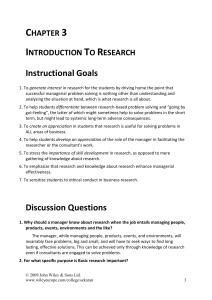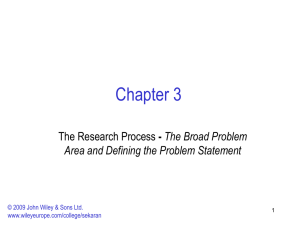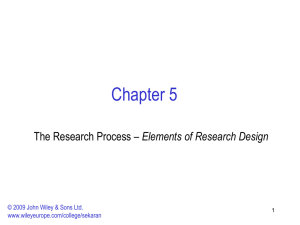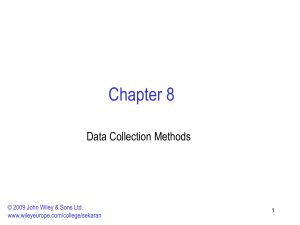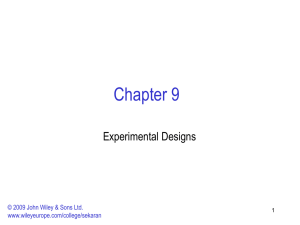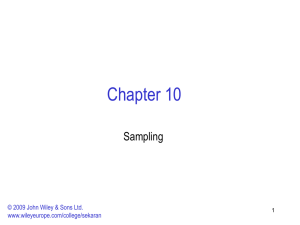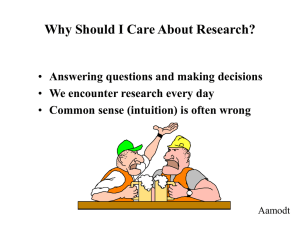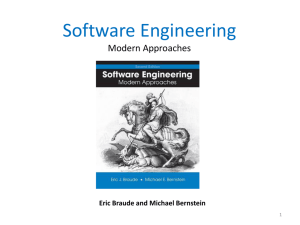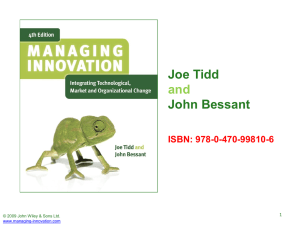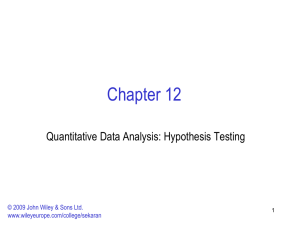CH01
advertisement
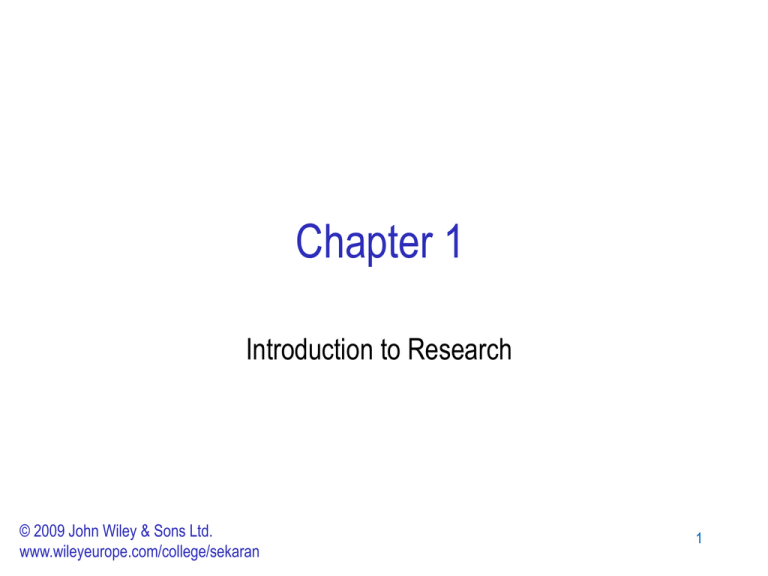
Chapter 1 Introduction to Research © 2009 John Wiley & Sons Ltd. www.wileyeurope.com/college/sekaran 1 Definition of Business Research Business research: an organized, systematic, databased, critical, objective, scientific inquiry or investigation into a specific problem, undertaken with the purpose of finding answers or solutions to it. © 2009 John Wiley & Sons Ltd. www.wileyeurope.com/college/sekaran 2 Applied versus Basic Research Basic research: generates a body of knowledge by trying to comprehend how certain problems that occur in organizations can be solved. Applied research: solves a current problem faced by the manager in the work setting, demanding a timely solution. © 2009 John Wiley & Sons Ltd. www.wileyeurope.com/college/sekaran 3 Examples Applied Research Apple’s iPod fueled the company’s success in recent years, helping to increase sales from $5 billion in 2001 to $32 billion in the fiscal year 2008. Growth for the music player averaged more than 200% in 2006 and 2007, before falling to 6% in 2008. Some analysts believe that the number of iPods sold will drop 12% in 2009. “The reality is there’s a limited group of people who want an iPod or any other portable media player,” one analyst says. “So the question becomes, what will Apple do about it?” The existing machinery in the production department has had so many breakdowns that production has suffered. Machinery has to be replaced. Because of heavy investment costs, a careful recommendation as to whether it is more beneficial to buy the equipment or to lease it is needed. © 2009 John Wiley & Sons Ltd. www.wileyeurope.com/college/sekaran 4 More Examples of Research Areas in Business Absenteeism Communication Motivation Consumer decision making Customer satisfaction Budget allocations Accounting procedures © 2009 John Wiley & Sons Ltd. www.wileyeurope.com/college/sekaran 5 Why managers should know about research Being knowledgeable about research and research methods helps professional managers to: – Identify and effectively solve minor problems in the work setting. – Know how to discriminate good from bad research. – Appreciate the multiple influences and effects of factors impinging on a situation. – Take calculated risks in decision making. – Prevent possible vested interests from exercising their influence in a situation. – Relate to hired researchers and consultants more effectively. – Combine experience with scientific knowledge while making decisions. © 2009 John Wiley & Sons Ltd. www.wileyeurope.com/college/sekaran 6 The Manager–Researcher Relationship Each should know his/her role Trust levels Value system Acceptance of findings and implementation Issues of inside versus outside researchers/consultants © 2009 John Wiley & Sons Ltd. www.wileyeurope.com/college/sekaran 7 Internal Researchers Advantages: – Better acceptance from staff – Knowledge about organization – Would be an integral part of implementation and evaluation of the research recommendations. Disadvantages – Less fresh ideas – Power politics could prevail – Possibly not valued as “expert” by staff © 2009 John Wiley & Sons Ltd. www.wileyeurope.com/college/sekaran 8 External Researchers Advantages – Divergent and convergent thinking – Experience from several situations in different organizations – Better technical training, usually Disadvantages – – – – Takes time to know and understand the organization Rapport and cooperation from staff not easy Not available for evaluation and implementation Costs © 2009 John Wiley & Sons Ltd. www.wileyeurope.com/college/sekaran 9
